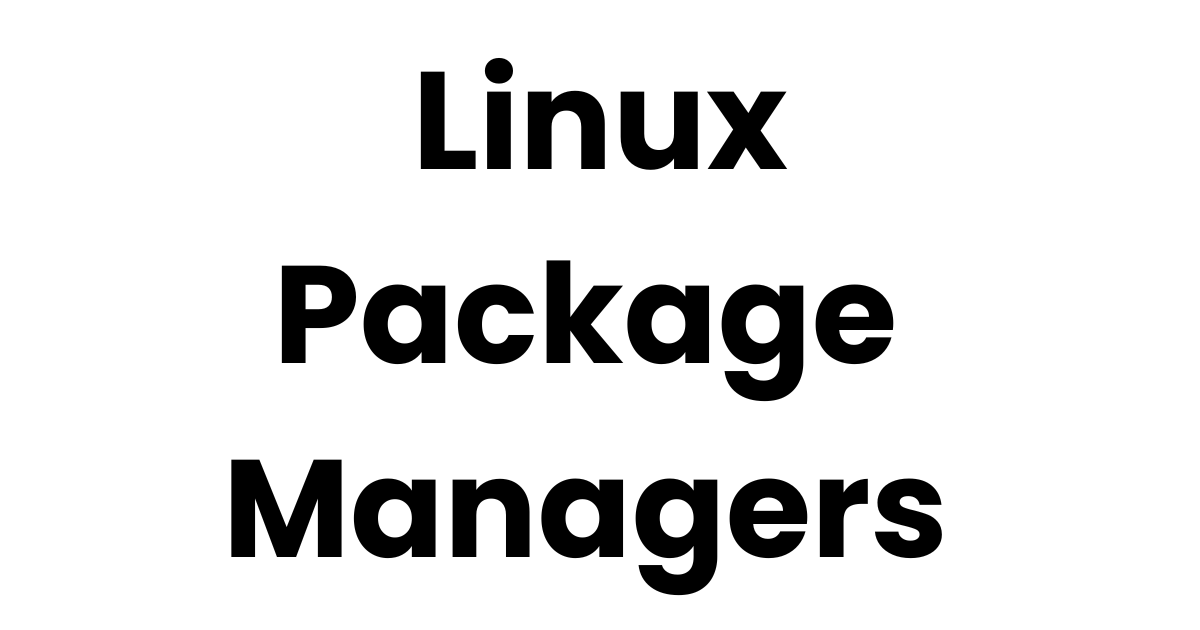Understanding Package Managers in Linux
 Ali Hassan Khan Yousafzai
Ali Hassan Khan Yousafzai
Package managers play a crucial role in maintaining and managing software installations in Linux systems. They automate the process of installing, updating, and removing software packages, ensuring that dependencies are resolved seamlessly. In this article, we'll explore two popular package management systems: RPM (Red Hat Package Manager) and YUM (Yellowdog Updater, Modified). We'll also dive into the fundamental commands associated with each.
What Are Package Managers?
A package manager is a collection of tools that automates the process of managing software packages within an operating system. It handles downloading, installing, upgrading, configuring, and removing software. In Linux, package managers are essential for maintaining system stability and ensuring that dependencies are met when new software is installed.
Linux distributions typically rely on package managers to simplify software management tasks. They are especially important in enterprise environments, where efficiency and consistency are paramount.
RPM (Red Hat Package Manager)
RPM is a powerful package management system used primarily by Red Hat-based Linux distributions such as CentOS and Fedora. It allows users to install, uninstall, and query packages, as well as manage package dependencies.
Key RPM Commands:
rpm -i pkgname.rpm: This command installs a package from a .rpm file.rpm -e pkgname.rpm: Used to uninstall a package.rpm -q pkgname.rpm: Queries information about the installed package.
These commands provide a direct way to manage packages, but they do not resolve dependencies automatically, which is why YUM or other dependency-resolving tools are often preferred.
YUM (Yellowdog Updater, Modified)
YUM simplifies the process of installing, updating, and removing software packages by resolving dependencies automatically. It retrieves packages from repositories configured on the system, ensuring that the required versions of libraries and other dependencies are also installed.
Key YUM Commands:
Install a Package
yum install ansible: This installs Ansible along with all its dependencies by searching the internet repositories configured on your system.
Show Repository List
yum repolist: Displays the list of enabled repositories in CentOS, allowing you to see which repositories are available for installing software.
View Repository Configuration
ls /etc/yum.repos.d/: This shows the location where repository configuration files are stored on your system.cat /etc/yum.repos.d/CentOS-Base.repo: This command reveals the URL and details of the CentOS repository, providing insight into where YUM fetches its packages.
List Available and Installed Packages
yum list ansible: Displays the installed version of Ansible and other available versions.
Remove a Package
yum remove ansible: Uninstalls Ansible and removes all associated files and dependencies.
Show All Available Versions of a Package
yum --showduplicates list ansible: Lists all the versions of Ansible available in the repositories.
Install a Specific Version of a Package
yum install ansible-2.4.2.0: Installs a particular version of Ansible, in this case, version 2.4.2.0.
YUM not only installs software but also keeps track of the software’s dependencies, which makes it more robust than RPM when managing complex installations.
Package Repositories and Configuration
Package repositories are servers that host collections of software packages. In a YUM-based system, repositories are typically configured in files located in the /etc/yum.repos.d/ directory. These files contain URLs and instructions about where to fetch the packages.
For instance:
cat /etc/yum.repos.d/CentOS-Base.repoprovides the base repository information for CentOS, including where YUM retrieves its packages from the internet.
Understanding these repository configurations is key to ensuring that your system can access the correct software packages and updates.
Conclusion
Package managers like RPM and YUM make Linux systems more manageable by simplifying software installation and dependency resolution. While RPM allows for direct control over individual packages, YUM offers a higher level of automation, making it easier to manage complex dependencies.
Both tools are essential for maintaining system efficiency and security, particularly in enterprise environments where stability is crucial. Whether you're installing software, querying package information, or managing repositories, mastering RPM and YUM is an indispensable skill for any Linux administrator.
Subscribe to my newsletter
Read articles from Ali Hassan Khan Yousafzai directly inside your inbox. Subscribe to the newsletter, and don't miss out.
Written by

Ali Hassan Khan Yousafzai
Ali Hassan Khan Yousafzai
As a DevOps Engineer at Polymer SaaS DLP, I orchestrate seamless deployments for optimal performance, leveraging cloud-native technologies and infrastructure as code (IaC) tools. I have implemented CI/CD pipelines, monitoring and logging solutions, and automated testing frameworks to streamline development and enhance scalability. I have also contributed to resolving complex issues, optimizing resource utilization, and ensuring security and compliance standards.